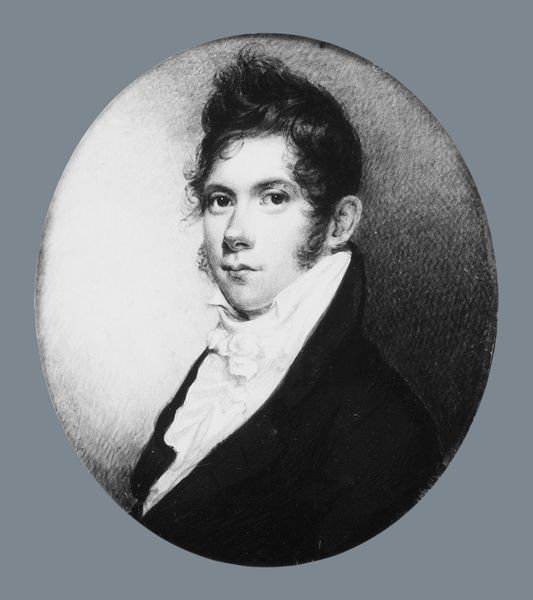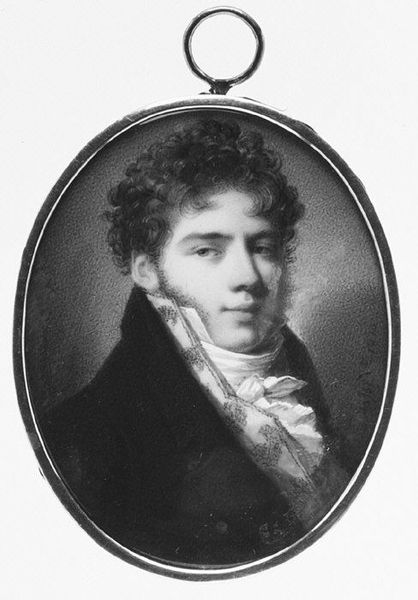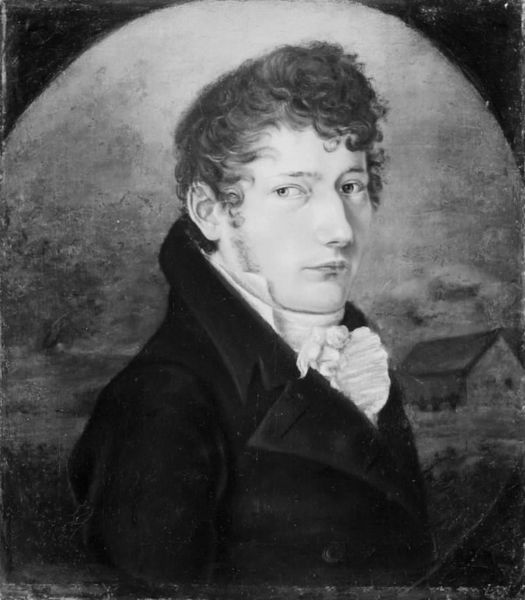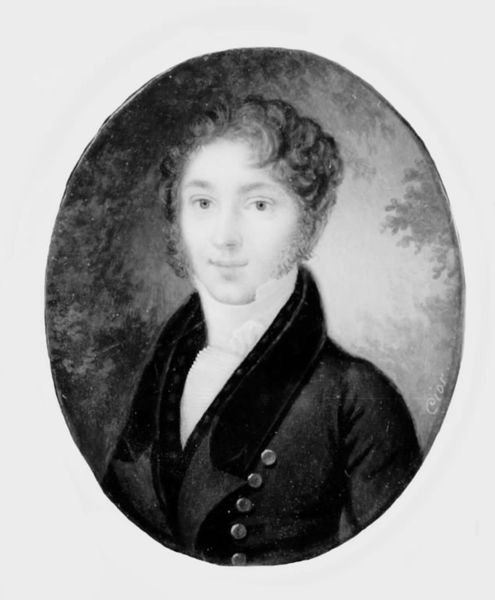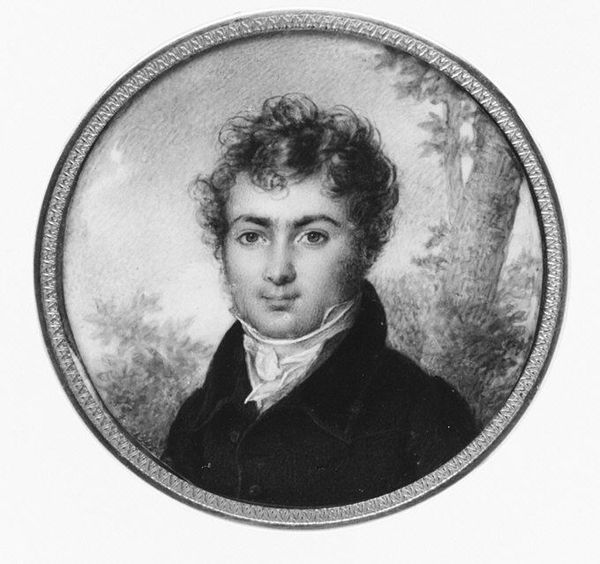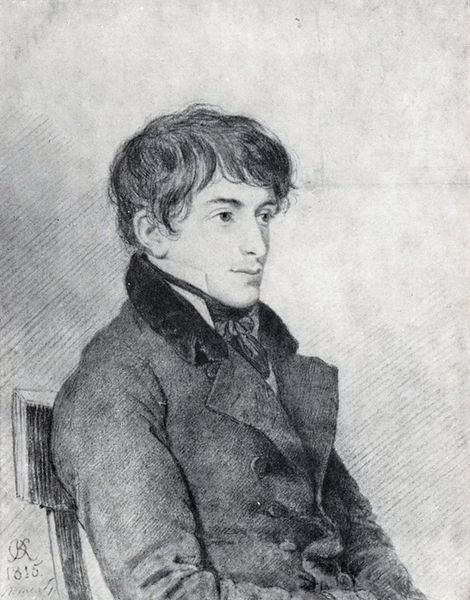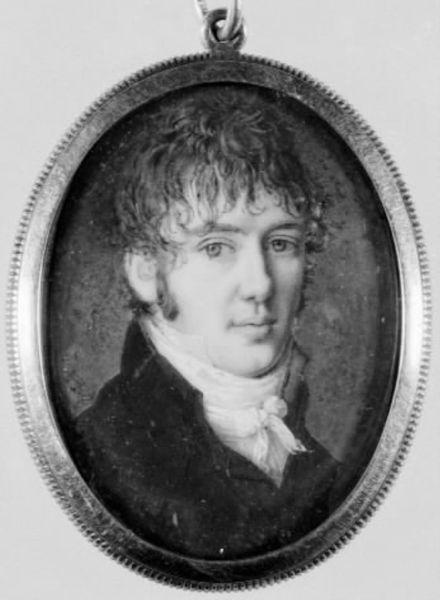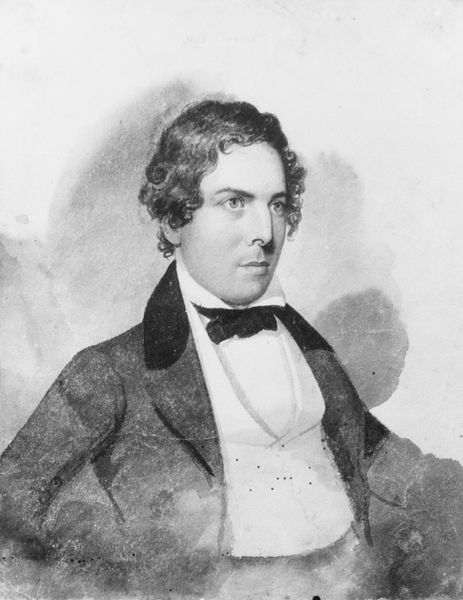
drawing, pencil
#
portrait
#
drawing
#
self-portrait
#
portrait
#
romanticism
#
pencil
#
history-painting
Copyright: Public domain
Curator: Let’s turn our attention to Orest Kiprensky's "Portrait of Nikita Mikhailovich Muraviev," rendered in pencil in 1813. It's a striking piece. Editor: Yes, my initial feeling is one of quiet intensity. The soft hatching gives a somewhat ephemeral feel, juxtaposed with the sitter’s direct, almost challenging gaze. Curator: Kiprensky was renowned for his mastery of pencil and his innovative approach to portraiture. One can appreciate the layering here to develop the tonal range and achieve that palpable texture, particularly in the depiction of the jacket. What was the societal use of pencil at the time? Editor: I’d say it’s crucial to remember that this portrait was created against the backdrop of burgeoning Russian nationalism after the Napoleonic Wars. Muraviev, though appearing rather contemplative, was, in fact, a key figure in the Decembrist movement. I find it striking that this intimate style was deemed appropriate for someone engaged in revolutionary activity. It seems very...bourgeois! Curator: Good point, his coat's fabric seems like a really cozy material to support such activity, yet so many details in that exact materiality would require labor. Do you believe Kiprensky was drawn to Muraviev's revolutionary beliefs or more captivated by him as a physical subject and how he can render this man using a pencil? Editor: That's hard to separate, isn’t it? Consider the implications of immortalizing a future rebel using an accessible, almost democratic medium like pencil drawing. Kiprensky, through this material choice, democratized his portrait. It makes me think about the role of artistic representation in constructing and contesting power, as Nikita's image as an instigator lived on through Orest's choices. Curator: Yes! His fame grew from the use of material and the pencil marks, its "layering". We think of oil paintings, sculpture and print as more accessible formats as their industrial copies proliferate them. However, the accessibility of a pencil could be a huge tool as many portraitists could practice using one and many political actors like Muraviev can also have access to that medium. It is the tool for everybody, an equalizer. Editor: Indeed. This work isn’t just a visual record of a person; it’s a layered social statement, a potent confluence of material accessibility, revolutionary context, and an artist's choice that blurs lines between individual identity and the larger political movements of that era. Curator: A reminder that, even with simple tools, artists actively shaped historical narratives through choices big and small. Editor: Precisely! It is in considering historical context, material and artistic choices that "Portrait of Nikita Mikhailovich Muraviev" gains such nuanced and striking significance.
Comments
No comments
Be the first to comment and join the conversation on the ultimate creative platform.



